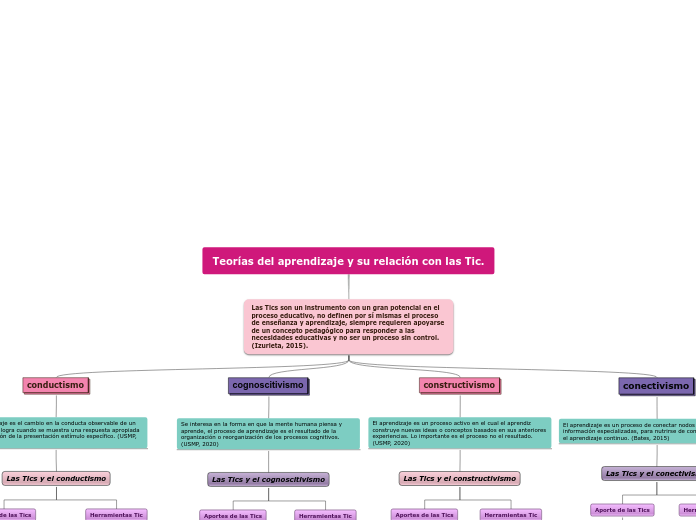av JACQUELINE SANCHEZ för 4 årar sedan
443
Teorías del aprendizaje y su relación con las Tic.

av JACQUELINE SANCHEZ för 4 årar sedan
443

Mer av detta
Type in the name of the multiple-perspectives text.
Example: Bridge to Terabithia by Katherine Paterson
Identify an important issue from the text that is being presented from different angles. Type it in.
Example: Jesse's drawing talent.
Decide on the fourth point of view
Type in the name of the last character whose perspective on the issue you are going to present.
Example: Leslie Burke, Jesse's new next-door neighbor, and best friend.
Point of view
Type in a relevant quote that highlights the character's point of view. Try to follow a citation format: author's name, chapter, and page.
Example: I can't get the poetry of the trees,' he said. She nodded. Don't worry,' she said. You will someday. He believed her.' (Paterson, 4. 24)
Las Tics y el conectivismo
How is the viewpoint introduced in the story?
Choose an answer:
- Slideshare - Twitter - Blogger - Mooc
Permite que fluya la información constantemente y que ella resida en dispositivos no humanos, da la elección libre de que aprender. (Hernandez, 2016)
Whose character does the third point of view belong to?
Type in his/her name.
Example: Mr. Aarons, Jesse's father.
What does the character think, say or do that suggests their perspective on the issue?
Type in a quote and try to maintain the citation format.
Example: 'He would like to show his drawings to his dad, but he didn't dare. (...) He'd thought his dad would be pleased. He wasn't. What are they teaching in that damn school? he had asked.' (Paterson, 2.8)
Las Tics y el constructivismo
What kind of narration introduces the viewpoint?
Choose an answer:
- Las redes sociales - Las wikis - Las blogs - Facebook - Youtube
Permiten la participación en plataformas sociales y colaborativas (Trejo, 2010). Cabe concluir que es donde el conocimiento se construye y reconstruye en colaboración con los demás.
Decide on the second point of view
Name the character (it can either be the main character or one of the supporting characters) whose point of view you are presenting.
Example: Miss Edmunds, Jesse's music teacher.
Type in a quote that points out the character's position about the issue.
Try to follow a citation format: author's name, chapter, and page.
Example: 'She said he was unusually talented, and she hoped he wouldn't let anything discourage him.' (Paterson, 2. 8)
Las Tics y el cognoscitivismo
How is the viewpoint introduced in the story?
Choose an answer:
- Foros de debate - Mapas mentales - Correo electrónico - Chat - Audio foros
Aportes de las Tics
Permite crear programas y sistemas en el que el estudiante no solo debe dar una respuesta, sino resolver problemas y tomar decisiones. (Trejo, 2010). Este tipo de actividades permite desarrollar estrategias y capacidades cognitivas.
Decide on the first point of view you are going to present.
Type in the name of the character (it can either be the main character or one of the supporting characters) whose point of view belongs to.
Example: Jesse Oliver Aarons, Jr., the main character of the novel, a fifth-grader living in a rural Southern area.
Type in a relevant quote that highlights the character's point of view towards
Las Tics son un instrumento con un gran potencial en el proceso educativo, no definen por sí mismas el proceso de enseñanza y aprendizaje, siempre requieren apoyarse de un concepto pedagógico para responder a las necesidades educativas y no ser un proceso sin control. (Izurieta, 2015)..
Try following a citation format: author's name, chapter, and page.
Example: 'Jesse drew the way some people drank whiskey. (...) Lord, he loved to draw. (...) When he was in first grade, he told his father that he wanted to be an artist when he grew up.' (Paterson, 2. 7)
Las Tics y el conductismo
What type of narration introduces the viewpoint?
Choose an answer:
Herramientas Tic
- Suma de dados (juego) - Computer Assisted Instruction
Aporte de las Tics
El alumno puede y debe encontrar una respuesta dado uno o varios estímulos presentados en pantalla, la selección de la respuesta se asocia a sonidos sonoros indicando al estudiante si acertó o erró la respuesta. (Trejo, 2010)